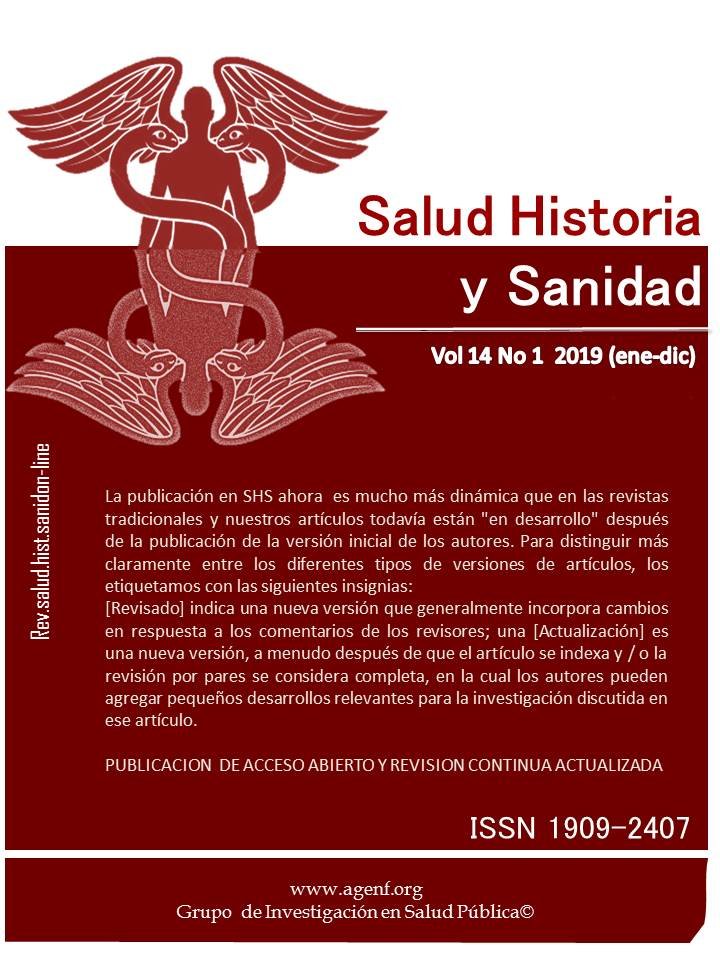Abstract
Problem: Physical activity stimulates cognitive development,helps prevent diseases and improves health, will then help toimprove the academic average of students in tenth and eleventhgrades. Objective: Describe the relationship between the levelof physical activity and the academic average of a sample ofmiddle school students from an educational institution in Tunja. Method: Descriptive-correlational study, in a sample of 100students to whom the short version IPAQ questionnaire was applied; Descriptive statistics are used for the analysis, Chi testsand their p-value are applied. Results: They present controversy, students in general have high levels of physical activity,but there is no relationship with significant academic performance, it is under mathematical performance in both sexes, being lower in men; Planning strategies are required to performphysical activity that contribute to students’ cognitive development.
References
Bastos, F., Machado, R.V. (2015). Relation between sport and physical activity, BMI levels, perceptions of suc-cess and academic performance. Revista Motricidade, volumen (11), 41-58.
Drobnic, F. (2013). La actividad física mejora el aprendizaje y el rendimiento escolar. Recuperado de: https://faros.hsjdbcn.org/es/cuaderno-faro/actividad-fisica-mejora-aprendizaje-rendimiento-escolar.
Edel, N. (2013). El rendimiento académico: concepto, investigación y desarrollo. Revista Iberoamericana sobre Calidad, Eficacia y Cambio en Educación, volumen (1), 0-12.
Europeo de Información sobre la Alimentación- EUFIC. (2009). Physical Activity. Recuperado de: http://www.eufic.org/page/en/page/energy-physical-activity/?article=12
Hagstromer, M. (2008). Concurrent validity of a modified version of the International Physical Activity Questionnaire (IPAQ-A) in European adolescents: The HELENA Study. Revista International Journal of Obesity, volumen (32), 42–182.
Hernandez, &. O. (2010). Metodologia de la Investigación (4 Edición ed.). Mexico DF: Mc Graw-Hill Interamericana Editores. Recuperado el 15 de FEBRERO de 2016, de http://es.scribd.com/doc/38757804/Metodologia-de-La-Investigacion-Hernandez-Fernandez-Batista-4ta-Edicion#scribd
Lindner, K. J. (1999). Sport Participation and Perceived Academic Performance of School Children and Youth. Revista Pediatric Excercise Science, volumen (8), 129-143.
Mantilla, T. S.C., Gómez, C. A. (2017). Cuestionario internacional de actividad física (IPAQ). Revista Iberoamericana de Fisioterapia y Kinesiología, volumen (10), 1-52.
Miministerio de Educación Nacional, MEN. (16 de Abril de 2009). Evaluación en el Aula. Obtenido de: https://www.mineducacion.gov.co/1621/articles187765_archivo_pdf_decreto_1290.pdf
Organización Mundial de la Salud. (2009). Global strategy on diet. Obtenido de Physical activity and healt. Recuperado de: http://www.who.int/dietphysicalactivity/pa/en/index.html.
Organización Mundial de la Salud -OMS. (2015). Global strategy on diet. Recuperado de: http://www.who.int/dietphysicalactivity/pa/en/index.html.
Pamos, M.A. (2016). Relación entre la actividad física y el rendimiento académico en educación primaria. (Tesis pregrado en educación primaria). Universidad De Jaén; Jaén.
Prieto, J.M., Martinez, A.C., (2016). La Práctica de Actividad Física y su Relación con el Rendimiento Académico. Revista de Educación Física, volumen (34), 4 -16.
Promotion-CDC., N. C. (2002). Promoting physical activity. Revista Journal of Preventive Medicine, volumen (7), 73-102.
Vallejo, R.C.F. (2015). Análisis comparativo del rendimiento académico entre alumnos de secundaria del liceo Javier que realizan actividades extra horario de arte Y deporte y alumnos que no lo hacen, años 2012, 2013 y 2014. (Tesis magíster en educación y aprendizaje). Universidad Rafael Landívar, Guatemala De La Asunción.

This work is licensed under a Creative Commons Attribution-NonCommercial-NoDerivatives 4.0 International License.
Copyright (c) 2020 REVISTA SALUD, HISTORIA Y SANIDAD
